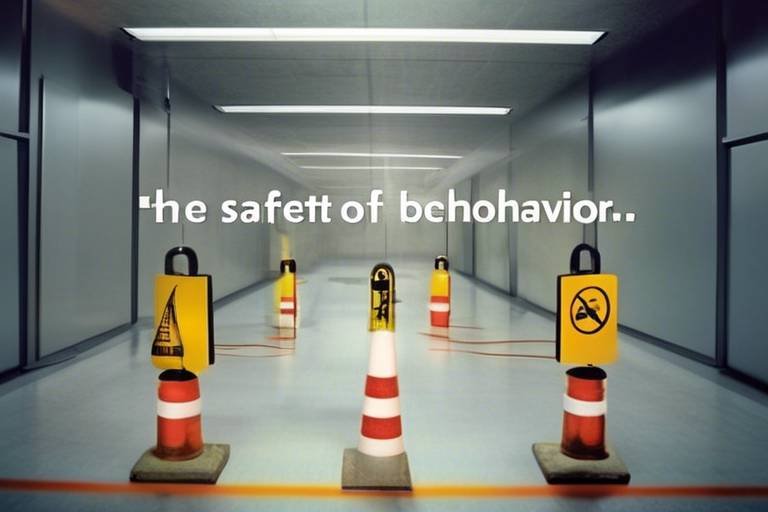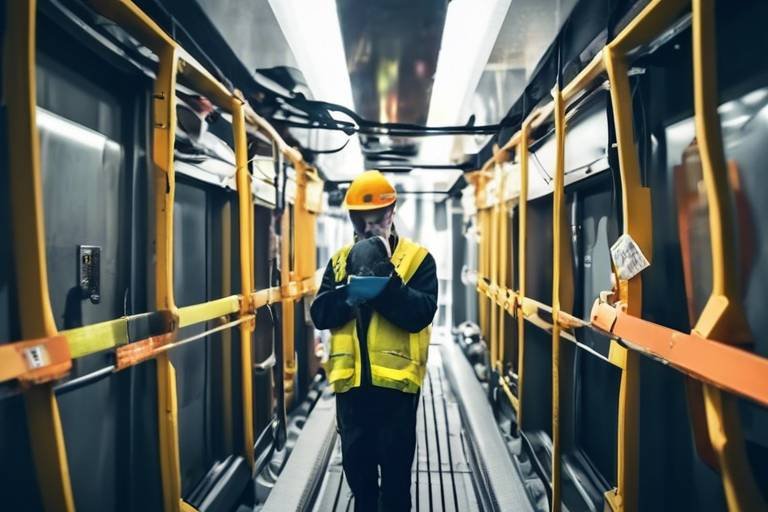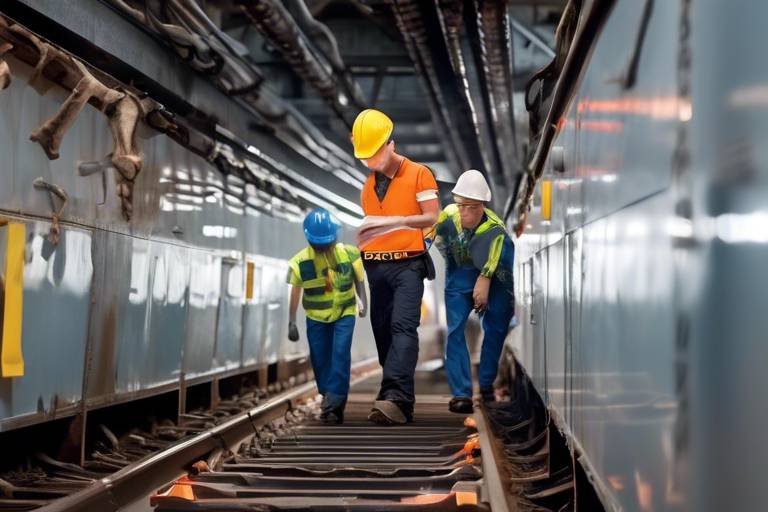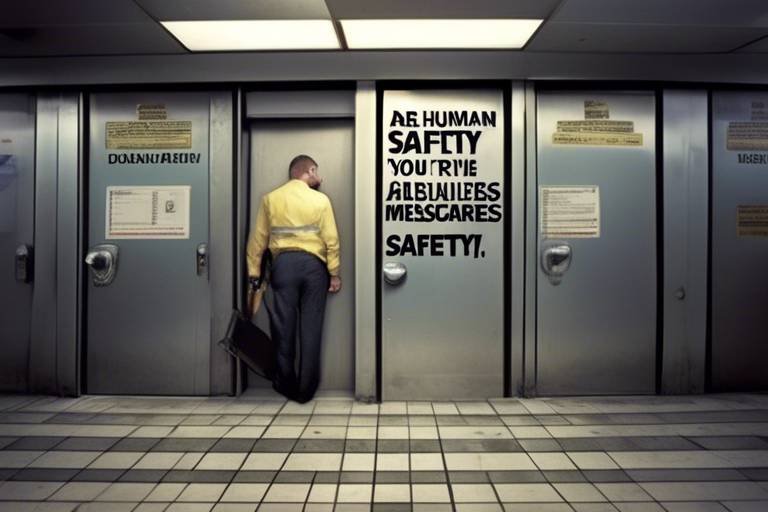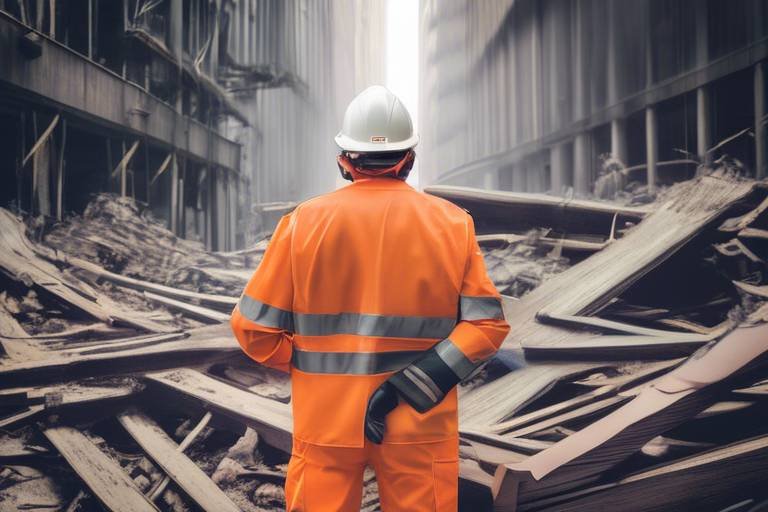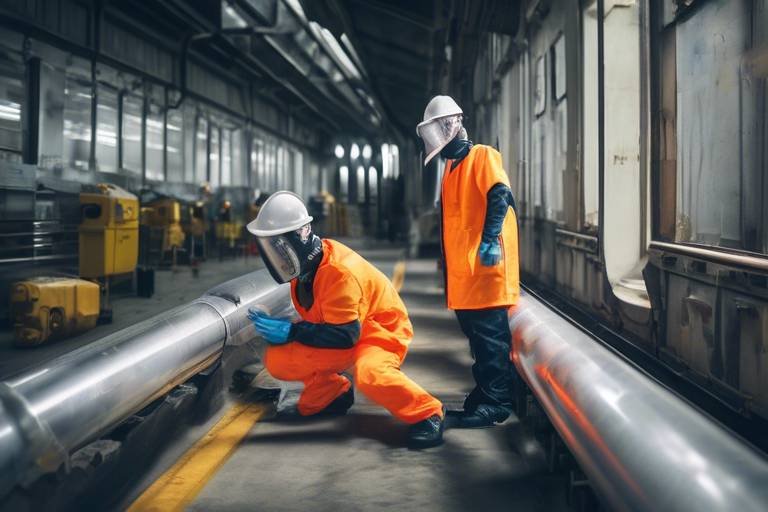Safety First: The Effect of Human Behavior
Safety is a universal concern that transcends boundaries, industries, and even cultures. It's not just about adhering to protocols or following rules; it's fundamentally about how we, as humans, perceive, react to, and engage with our environments. Every day, our decisions—whether conscious or subconscious—shape the safety landscape around us. This article dives deep into the intricate web of human behavior and its profound impact on safety across various settings. We will explore psychological factors, decision-making processes, and effective strategies to promote safer practices. Are you ready to uncover the layers of human behavior that influence safety? Let’s dive in!
Human behavior is a complex interplay of psychological, social, and environmental factors. Think of it as a dance, where each element influences the other, creating a rhythm that can either enhance or diminish safety. Our behaviors are not formed in isolation; they are shaped by our surroundings, our interactions with others, and our internal thought processes. When it comes to safety, understanding these fundamentals is crucial. For instance, why do some people take safety warnings seriously while others shrug them off? It’s all rooted in the nuances of human behavior, which is often unpredictable and influenced by myriad factors.
When we talk about safety, we can't overlook the psychological factors at play. Elements such as perception, motivation, and risk assessment are pivotal in determining how individuals respond to potentially hazardous situations. For example, consider a construction worker who has been trained in safety protocols but chooses to ignore them. What drives this behavior? It could be a lack of perceived risk, a motivational deficit, or even a cognitive bias at play. Understanding these psychological elements can help us devise better safety strategies that resonate with individuals on a deeper level.
Risk perception varies widely among individuals, influenced by personal experiences and biases. This variation can significantly affect safety outcomes. For instance, someone who has previously experienced a workplace accident may have a heightened sense of risk, prompting them to adhere strictly to safety protocols. Conversely, another individual who has never faced such an incident might underestimate the dangers, leading to complacency. This section will delve into how our unique backgrounds shape our understanding of risk and safety.
Past experiences can dramatically alter an individual's perception of risk. Imagine a person who has narrowly escaped a serious accident; their heightened awareness of potential dangers can lead to a more cautious approach in the future. On the flip side, someone who has consistently operated in a low-risk environment may develop a false sense of security. This section will explore how these experiences shape future behavior regarding safety, emphasizing the need for continuous education and awareness.
Cognitive biases can distort risk assessment, leading individuals to make unsafe choices. For instance, the optimism bias might lead someone to believe that accidents won't happen to them, despite overwhelming evidence to the contrary. Common biases, such as confirmation bias or the bandwagon effect, can further complicate decision-making in safety-critical situations. This section will examine these biases and their implications, highlighting the importance of recognizing and mitigating them in safety practices.
Understanding what motivates individuals to comply with safety measures is essential. Motivation can be intrinsic, stemming from personal values and beliefs, or extrinsic, driven by external rewards or pressures. For example, a worker might follow safety protocols because they genuinely care about their well-being (intrinsic) or because they want to avoid penalties (extrinsic). This part discusses how identifying these motivators can enhance adherence to safety protocols, ultimately fostering a culture of safety within organizations.
Social dynamics play a significant role in shaping safety behavior. Group behavior and cultural norms can either bolster or undermine safety efforts. For instance, if a team collectively prioritizes safety, individuals are more likely to comply with safety measures. However, if risky behaviors are normalized within a group, even the most safety-conscious individuals may feel pressured to conform. This section investigates how social influences can enhance or detract from safety practices.
Peer pressure can have a dual effect on safety behavior. On one hand, it can lead to risky behaviors, especially in environments where individuals feel compelled to impress their peers. On the other hand, positive peer pressure can promote safety compliance, encouraging individuals to adhere to safety protocols. This section will explore the complexities of peer influence in safety contexts, emphasizing the need for fostering supportive environments that prioritize safety.
Cultural beliefs and values shape how safety is perceived and practiced. In some cultures, safety may be viewed as a personal responsibility, while in others, it might be seen as a collective obligation. Understanding these cultural attitudes is crucial for developing effective safety strategies that resonate with diverse groups. This subsection analyzes the impact of cultural attitudes on safety behaviors and compliance, highlighting the importance of tailoring safety initiatives to align with cultural values.
- What are the main psychological factors that influence safety behavior?
The main psychological factors include risk perception, motivation, and cognitive biases that affect decision-making in safety-critical situations.
- How can past experiences shape safety behavior?
Past experiences can heighten awareness of risks or lead to complacency, significantly impacting future safety decisions.
- What role does social influence play in safety compliance?
Social influences can either enhance or undermine safety behaviors, depending on group dynamics and cultural norms.

Understanding Human Behavior
This article explores how human behavior influences safety in various environments, examining psychological factors, decision-making processes, and strategies to promote safer practices across different sectors.
Human behavior is a complex interplay of psychological, social, and environmental factors. It's fascinating how our actions, often driven by subconscious motivations, can lead to significant consequences in safety protocols. Imagine walking into a construction site; the rules are clear, yet you might notice some workers not wearing helmets. Why is that? This discrepancy often boils down to an individual's understanding of safety and their perception of risk. It’s crucial to grasp these underlying factors, as they can profoundly impact safety practices.
At the core of understanding human behavior in safety contexts is the notion that our actions are not merely instinctual but are influenced by a myriad of factors. For instance, consider the decision-making process when someone is faced with a potential hazard. Are they aware of the risks? Do they feel motivated to act safely? These questions highlight the importance of examining the psychological factors that drive our behavior. By understanding what influences our choices, we can develop better strategies to promote safety.
Furthermore, the environment plays a significant role in shaping behavior. A workplace with a strong safety culture—where safety is prioritized and openly discussed—can foster a sense of responsibility among employees. In contrast, environments where safety is overlooked can lead to a culture of complacency. This is why it’s essential to create an atmosphere that encourages safe practices, making safety a part of everyday conversation.
In summary, understanding human behavior in the context of safety is not just about recognizing the rules; it’s about delving deeper into the motivations, perceptions, and environmental influences that shape our actions. By doing so, we can better equip individuals to make safer choices, ultimately leading to a significant reduction in accidents and injuries.
Psychological factors such as perception, motivation, and risk assessment play crucial roles in safety. Here, we analyze how these elements influence individuals' decisions and actions in potentially hazardous situations.
Risk perception varies among individuals and can significantly affect safety outcomes. This subsection explores how personal experiences and biases shape one's understanding of risk and safety.
Past experiences can alter an individual's perception of risk, leading to either heightened awareness or complacency. We discuss how these experiences shape future behavior regarding safety.
Cognitive biases can distort risk assessment, leading to unsafe choices. This section examines common biases that impact decision-making in safety-critical situations.
Understanding what motivates individuals to comply with safety measures is essential. This part discusses intrinsic and extrinsic motivators that influence adherence to safety protocols.
Social dynamics, including group behavior and cultural norms, significantly affect safety practices. This section investigates how social influences can enhance or undermine safety efforts.
Peer pressure can lead to risky behaviors or promote safety compliance. We explore the dual nature of peer influence in safety contexts.
Cultural beliefs and values shape how safety is perceived and practiced. This subsection analyzes the impact of cultural attitudes on safety behaviors and compliance.
- What are the main factors influencing human behavior in safety?
Human behavior in safety is influenced by psychological factors, social dynamics, and environmental conditions, which together shape how individuals perceive and respond to risks.
- How does risk perception affect safety compliance?
Risk perception can lead to either heightened awareness or complacency regarding safety measures, impacting an individual's willingness to comply with safety protocols.
- Can past experiences change how someone approaches safety?
Yes, past experiences can significantly shape an individual's risk perception and behavior towards safety, either making them more cautious or overly confident.
- What role does culture play in safety practices?
Cultural attitudes and values can either enhance or undermine safety practices, influencing compliance and the overall safety culture within an organization.

Psychological Factors in Safety
When we talk about safety, it's not just about rules and regulations; it's deeply rooted in human psychology. Our thoughts, feelings, and behaviors all play a crucial role in how we perceive and respond to safety measures. Understanding these psychological factors can help us develop better safety protocols and practices. Think of it this way: if safety is a house, then psychological factors are the very foundation upon which it stands. Without a solid understanding of how people think and act, even the best safety measures can crumble.
One of the primary psychological factors influencing safety is risk perception. This refers to how individuals interpret the likelihood and severity of potential hazards. For instance, some people may view a construction site as a dangerous area, while others might see it as just another day at work. This variation in perception can lead to different behaviors—some might take extra precautions, while others may act carelessly. The reality is that our personal experiences, societal influences, and even media portrayals can skew our understanding of risk. Imagine someone who has never experienced a workplace accident; they might underestimate the dangers present in their environment, leading to unsafe practices.
Risk perception is a fascinating yet complex topic. It's influenced by various factors, including personal experiences and cognitive biases. For example, an individual who has witnessed an accident may develop a heightened sense of caution, always looking for potential dangers. Conversely, someone who has never faced a serious incident might feel invincible, leading to a false sense of security. This inconsistency can be detrimental to safety practices, as it creates a disparity in how risks are assessed and managed.
Our past experiences shape our present behaviors in profound ways. A person who has been involved in a near-miss accident may become overly cautious, double-checking their equipment and following safety protocols to the letter. On the other hand, someone who has consistently navigated hazardous environments without incident might develop a sense of complacency. This difference in behavior can be attributed to the psychological phenomenon known as the availability heuristic, where individuals rely on immediate examples that come to mind when evaluating a situation. Consequently, understanding how past experiences influence our perception of risk is vital for developing effective safety training and awareness programs.
Cognitive biases also play a significant role in safety-related decision-making. These biases can distort our understanding of risk and lead to unsafe choices. For instance, the optimism bias may cause individuals to believe that they are less likely to experience a negative event compared to others. This can lead to a lack of adherence to safety protocols, as they may feel "it won't happen to me." Similarly, the confirmation bias can cause individuals to seek out information that supports their pre-existing beliefs about safety, ignoring data that contradicts those beliefs. By recognizing these biases, organizations can tailor their safety training to address these common pitfalls, fostering a culture of safety awareness and compliance.
Understanding what drives individuals to comply with safety measures is essential for creating a safer environment. Motivation can be broadly categorized into two types: intrinsic and extrinsic. Intrinsic motivation refers to doing something because it is inherently rewarding, such as a personal commitment to safety. Extrinsic motivation, on the other hand, involves external factors, like rewards or penalties associated with compliance. By fostering both types of motivation, organizations can enhance adherence to safety protocols and ultimately reduce accidents.
In conclusion, the psychological factors influencing safety are multifaceted and deeply intertwined with human behavior. By understanding these factors, we can create more effective safety strategies that resonate with individuals on a personal level. After all, safety is not just about following rules; it's about changing mindsets and behaviors to create a culture where safety is prioritized.
- What are psychological factors in safety?
Psychological factors in safety refer to the mental processes and emotional responses that influence how individuals perceive and act regarding safety measures. - How does risk perception affect safety?
Risk perception affects safety by influencing how individuals assess hazards and their likelihood of occurrence, which can lead to either cautious or reckless behavior. - What role do past experiences play in safety behavior?
Past experiences can significantly shape an individual's perception of risk, leading to either increased awareness or complacency regarding safety protocols. - How can organizations improve safety compliance?
Organizations can improve safety compliance by addressing both intrinsic and extrinsic motivations, as well as providing training that considers cognitive biases.

Risk Perception
Risk perception is a fascinating yet intricate aspect of human behavior that can greatly influence safety outcomes. It’s not just about the actual danger present; rather, it’s how individuals interpret and react to that danger. Imagine standing at the edge of a cliff. For some, the view might be exhilarating, while others might feel a rush of fear. This difference in reaction illustrates the concept of risk perception perfectly. Various factors, including personal experiences, emotional states, and even societal influences, shape how we perceive risk.
One of the most significant contributors to risk perception is personal experience. If someone has previously faced a dangerous situation, they are likely to view similar scenarios with heightened caution. For instance, a person who has been in a car accident may be more vigilant while driving than someone who has never experienced such trauma. This heightened awareness can lead to safer practices, but it can also result in excessive fear. On the flip side, those who have never encountered danger may underestimate risks, leading to complacency.
Another critical element influencing risk perception is cognitive biases. These biases can distort our understanding of risk, often leading to decisions that could compromise safety. For example, the optimism bias makes individuals believe that they are less likely to experience negative outcomes than others. This can result in risky behaviors, such as not wearing a seatbelt or neglecting safety protocols. Similarly, the availability heuristic can skew perception; if someone frequently hears about accidents in the news, they may overestimate the likelihood of such events happening to them.
To illustrate the impact of these factors, consider the following table that summarizes how various elements shape risk perception:
| Factor | Impact on Risk Perception |
|---|---|
| Personal Experience | Increases awareness or leads to complacency based on past encounters. |
| Cognitive Biases | Can distort risk assessment, leading to overestimation or underestimation of danger. |
| Emotional State | Fear or anxiety can heighten perceived risk, while confidence can lower it. |
| Social Influences | Peer behavior and societal norms can either enhance or diminish perceived risks. |
Understanding risk perception is crucial for developing effective safety strategies. By recognizing the psychological underpinnings of how individuals assess risk, organizations can tailor their safety programs to address these perceptions. For instance, training sessions can incorporate real-life scenarios that resonate with employees, making the risks more tangible and relatable. Additionally, fostering an environment where individuals feel comfortable discussing their fears and experiences can lead to a more profound understanding of safety and risk.
In conclusion, risk perception is not just a personal matter; it’s a social phenomenon that can significantly impact safety outcomes. By acknowledging the various influences on how we perceive risk, we can take steps to cultivate a culture of safety that encourages informed decision-making and proactive behavior. So, the next time you find yourself in a potentially hazardous situation, take a moment to reflect on your perceptions. Are they grounded in reality, or are they influenced by biases and past experiences? Your answer could very well determine your safety.
- What is risk perception? Risk perception refers to how individuals interpret and respond to potential dangers based on various influences, including personal experiences and cognitive biases.
- How do cognitive biases affect safety decisions? Cognitive biases can distort an individual’s assessment of risk, leading to either overestimation or underestimation of potential dangers and influencing their safety choices.
- Can past experiences change how we perceive risk? Yes, past experiences can significantly alter an individual’s perception of risk, making them either more cautious or more complacent in similar future situations.
- Why is understanding risk perception important? Understanding risk perception is essential for developing effective safety strategies and fostering a culture of safety within organizations.
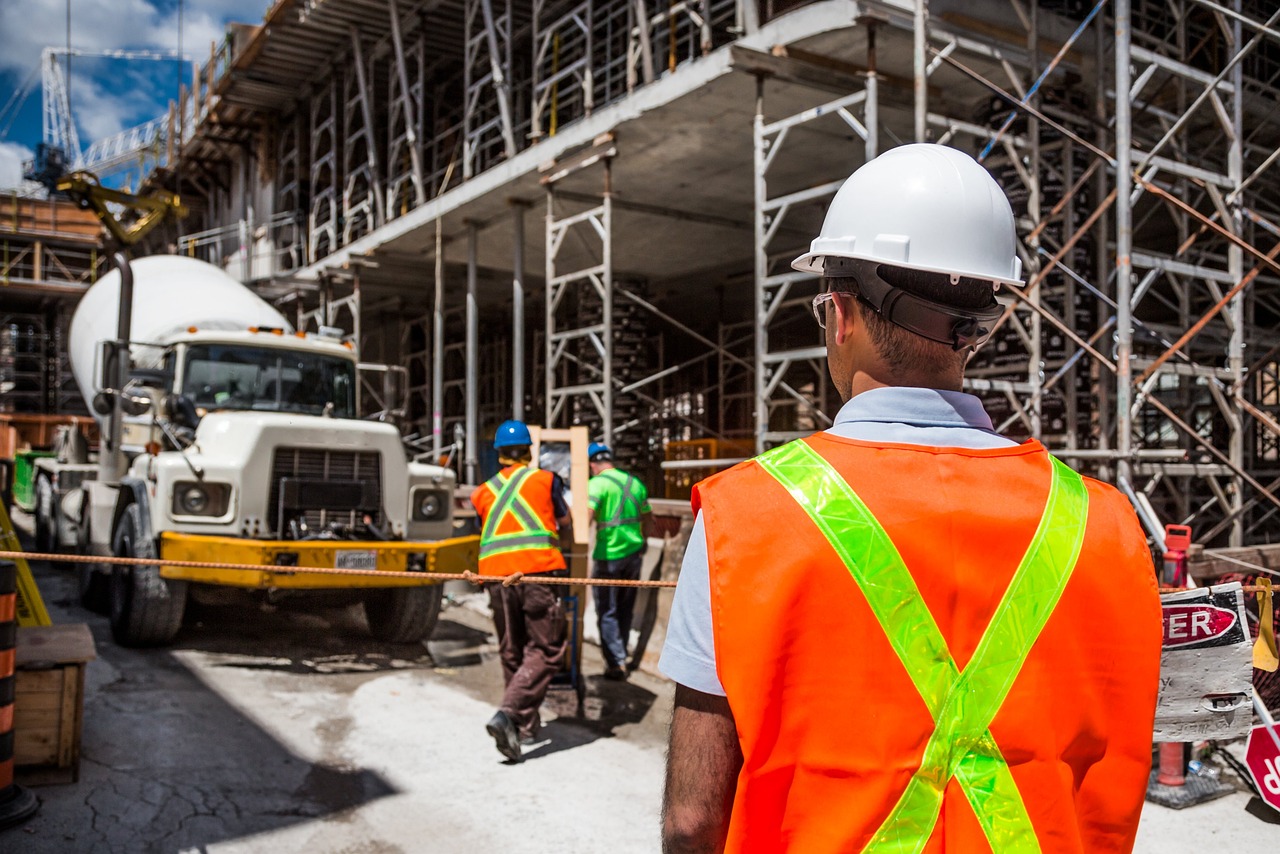
Influence of Past Experiences
When it comes to safety, our past experiences play a pivotal role in shaping how we perceive risk and respond to potential hazards. Think of it this way: if you've ever had a close call while driving, that moment is likely etched in your memory, acting as a mental alarm system every time you get behind the wheel again. This heightened awareness can lead to more cautious behavior, as you might find yourself double-checking your mirrors or obeying speed limits more strictly than before. On the flip side, those who have never encountered significant danger may develop a sense of complacency, believing that "it won't happen to me." This can lead to reckless decisions, putting themselves and others at risk.
Moreover, the influence of past experiences can be both positive and negative. For instance, someone who has undergone safety training or has witnessed an accident may become an advocate for safety practices, encouraging others to follow suit. Conversely, if someone has had a negative experience—such as an injury due to negligence—they may either become overly cautious or develop a distrust of safety protocols altogether. The key takeaway here is that our individual histories shape our perceptions and behaviors in profound ways. Understanding this can help organizations tailor their safety training programs to address these psychological nuances.
To illustrate this further, let’s consider a table that summarizes the contrasting impacts of past experiences on safety behavior:
| Type of Experience | Potential Impact on Safety Behavior |
|---|---|
| Positive Experience (e.g., successful safety training) | Increased adherence to safety protocols, proactive safety advocacy |
| Negative Experience (e.g., witnessing an accident) | Heightened caution or excessive fear, potential distrust of safety measures |
| No Significant Experience | Complacency, risk-taking behavior, underestimation of hazards |
In conclusion, the influence of past experiences on safety is a complex web of memories, emotions, and learned behaviors. Recognizing how these factors intertwine can help us create more effective safety strategies that resonate with individuals on a personal level. By acknowledging the unique backgrounds of each person, we can foster a culture of safety that truly prioritizes well-being and awareness.
- How do past experiences shape our perception of safety?
Past experiences can either heighten our awareness of risks or lead to complacency, depending on whether those experiences were positive or negative. - Can safety training mitigate the influence of negative past experiences?
Yes, effective safety training can help individuals reframe their understanding of risks and encourage proactive safety behaviors. - What role does memory play in safety compliance?
Memory influences how we recall past incidents, which in turn affects our decision-making and adherence to safety protocols.

Bias and Decision-Making
When it comes to safety, decision-making is not just about cold, hard facts; it's often influenced by a myriad of biases that can cloud our judgment. Imagine you're driving, and you see a stop sign. The rational choice is to stop, but what if your mind is playing tricks on you? You might think, "Oh, I've gone through this intersection a hundred times without stopping, and nothing bad has ever happened." This is where bias sneaks in, distorting your perception and leading to potentially dangerous choices.
One of the most common biases affecting decision-making is known as the optimism bias. This is the tendency to believe that we are less likely to experience negative events compared to others. For example, a construction worker might think, "Accidents happen to others, but not to me." This false sense of security can lead to complacency in following safety protocols, increasing the risk of accidents on the job site.
Another significant bias is the confirmation bias, where individuals tend to favor information that confirms their pre-existing beliefs. For instance, if someone believes that safety gear is unnecessary, they might ignore studies or reports that highlight its importance, leading them to make unsafe choices. This selective thinking can be detrimental, especially in environments where safety is paramount.
To better understand how biases influence our decisions, let's look at some common cognitive biases that can impact safety:
- Anchoring Bias: Relying too heavily on the first piece of information encountered.
- Availability Heuristic: Overestimating the likelihood of events based on how easily examples come to mind.
- Bandwagon Effect: Adopting beliefs or behaviors simply because others do.
These biases can create a false sense of security or lead to risky behaviors, particularly in high-stakes environments like construction sites, hospitals, or even at home. Therefore, it’s crucial to cultivate an awareness of these biases and actively work to mitigate their effects. One effective strategy is to encourage open discussions about safety and decision-making processes within teams. By fostering a culture where individuals feel comfortable sharing their concerns and experiences, organizations can create a more informed and safety-conscious environment.
Additionally, implementing regular training sessions that focus on recognizing and addressing cognitive biases can empower individuals to make better decisions. These sessions can include case studies and real-life scenarios that illustrate the consequences of biased decision-making, making the potential risks more relatable and tangible.
In conclusion, understanding the role of bias in decision-making is essential for promoting safety across various environments. By acknowledging these biases and taking proactive steps to counteract them, we can foster a culture of safety that prioritizes informed decision-making and ultimately saves lives.
- What are cognitive biases? Cognitive biases are systematic patterns of deviation from norm or rationality in judgment, which can lead to illogical conclusions and decisions.
- How can I reduce the impact of biases in my decision-making? Being aware of your biases, seeking diverse perspectives, and relying on data and facts can help mitigate their effects.
- Why is understanding bias important for safety? Recognizing how biases affect our decisions can lead to better adherence to safety protocols and ultimately reduce accidents and injuries.

Motivation and Safety Compliance
Understanding what drives individuals to comply with safety measures is crucial in creating effective safety protocols. At its core, motivation can be divided into two categories: intrinsic and extrinsic. Intrinsic motivation refers to the internal drive to engage in an activity for its own sake, such as the satisfaction gained from doing a task well or the desire to keep oneself and others safe. On the other hand, extrinsic motivation involves external factors, such as rewards or punishments, that can influence behavior. For instance, a worker might adhere to safety protocols to avoid penalties or to earn recognition from their peers or supervisors.
Research has shown that intrinsic motivation tends to lead to more sustainable compliance with safety measures. When individuals genuinely care about their own safety and the safety of those around them, they are more likely to engage in safe practices consistently. This can be likened to a gardener who nurtures their plants not just for the harvest, but for the joy of watching them grow. In contrast, extrinsic motivators, while effective in the short term, may not foster a lasting commitment to safety. Imagine a student who only studies to get good grades; once the exams are over, their motivation may wane.
To foster a culture of safety compliance, organizations must recognize the importance of both types of motivation. Here are some strategies that can be implemented:
- Recognition Programs: Acknowledge and reward individuals who consistently follow safety protocols. This not only boosts morale but also reinforces the importance of safety.
- Training and Education: Provide regular training sessions that emphasize the importance of safety and equip employees with the necessary skills to assess risks effectively.
- Open Communication: Encourage employees to voice their concerns and suggestions regarding safety practices. When individuals feel heard, their intrinsic motivation to maintain safety increases.
Moreover, creating a supportive environment where safety is prioritized can significantly enhance motivation. For instance, when employees see their leaders actively participating in safety practices and promoting a culture of care, they are more likely to follow suit. This is akin to a captain steering a ship; if the crew sees their captain navigating through stormy seas with confidence and care, they will feel more secure and motivated to contribute to the ship's safety.
In conclusion, motivation plays a pivotal role in safety compliance. By understanding the nuances of intrinsic and extrinsic motivators, organizations can tailor their safety programs to foster a culture where safety is not just a requirement, but a shared value. Ultimately, when individuals are motivated to prioritize safety, the entire environment becomes safer for everyone involved.
- What is intrinsic motivation? Intrinsic motivation is the internal drive to engage in an activity for its own sake, such as personal satisfaction or the desire to keep oneself safe.
- How can organizations enhance safety compliance? Organizations can enhance safety compliance by implementing recognition programs, providing regular training, and encouraging open communication.
- Why is extrinsic motivation less effective for long-term safety compliance? Extrinsic motivation may lead to compliance in the short term, but it often does not foster a lasting commitment to safety, as individuals may revert to unsafe practices once external rewards or penalties are removed.

Social Influences on Safety Behavior
When we think about safety, we often picture hard hats, warning signs, and strict protocols. But what if I told you that human behavior plays a crucial role in how these safety measures are perceived and followed? Social influences, including group dynamics and cultural norms, can significantly shape our safety practices. Imagine you’re at a construction site where everyone is wearing their protective gear. You’re more likely to follow suit, right? This phenomenon is driven by social dynamics that can either enhance or undermine safety efforts.
One of the most compelling aspects of social influence is peer pressure. It can be a double-edged sword. On one hand, it can lead to risky behaviors, especially in environments where individuals feel compelled to conform to the actions of their peers. For example, if a group of workers decides to skip wearing helmets because "it’s not a big deal," others might follow suit, thinking, "If they’re not worried, why should I be?" On the flip side, positive peer pressure can promote adherence to safety protocols. If your colleagues are diligent about following safety measures, their behavior can motivate you to do the same, creating a culture of safety.
Moreover, cultural attitudes towards safety can vary widely across different regions and industries. In some cultures, safety is prioritized and deeply ingrained in the collective mindset, while in others, it may take a backseat to productivity or cost-cutting measures. For instance, in a workplace where safety is celebrated and rewarded, employees are more likely to embrace safety protocols. Conversely, in environments where safety is seen as an inconvenience, compliance may dwindle. This cultural lens not only affects individual behavior but also shapes organizational policies and practices.
To better understand the impact of social influences on safety behavior, consider the following table that outlines key social factors and their potential effects:
| Social Factor | Positive Influence | Negative Influence |
|---|---|---|
| Peer Pressure | Encourages adherence to safety practices | Leads to risky behaviors and non-compliance |
| Cultural Norms | Fosters a strong safety culture | Undermines safety in favor of productivity |
| Group Dynamics | Creates a supportive environment for safety | Encourages complacency in unsafe practices |
In conclusion, understanding the social influences on safety behavior is essential for creating effective safety protocols. By recognizing the power of peer pressure and cultural attitudes, organizations can develop strategies to promote a culture of safety. This could include team-building exercises that emphasize safety, training sessions that highlight the importance of compliance, and open discussions about the consequences of risky behaviors. Ultimately, when we harness the power of social dynamics positively, we pave the way for a safer environment for everyone.
- What is the role of peer pressure in safety behavior?
Peer pressure can either encourage safe practices or lead to risky behaviors, depending on the group dynamics. - How do cultural attitudes affect safety compliance?
Cultural beliefs can significantly influence how safety is perceived, with some cultures prioritizing safety and others downplaying its importance. - What strategies can organizations use to promote a culture of safety?
Organizations can focus on team-building, training, and open discussions to enhance safety compliance.
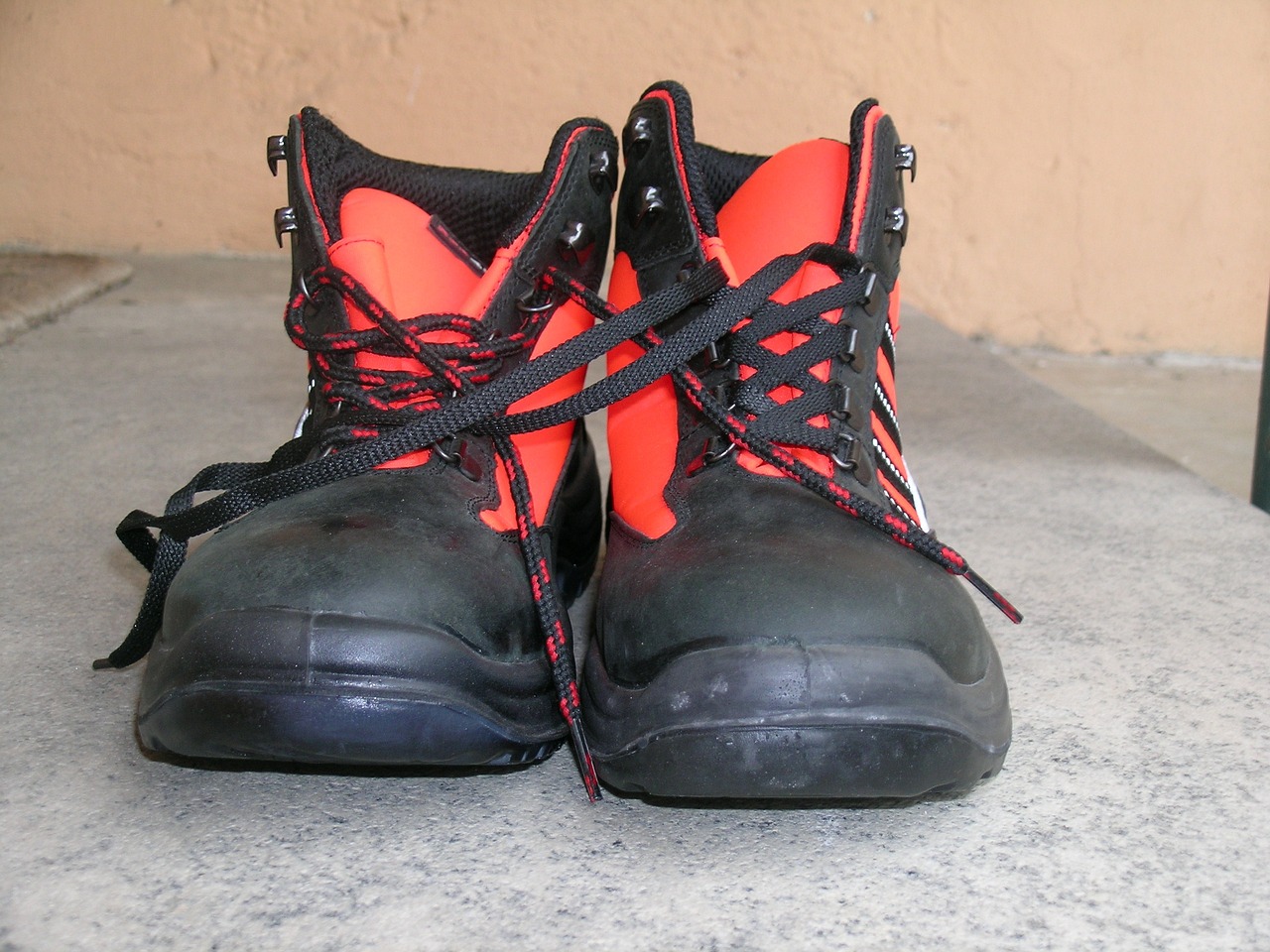
Peer Pressure and Safety
Peer pressure is a fascinating phenomenon that can have both positive and negative effects on safety behavior. Imagine being at a party where everyone is daring each other to try something risky, like climbing onto the roof for a better view. In this scenario, the social dynamics at play can either encourage reckless behavior or promote a culture of safety, depending on the group’s values and attitudes. It's crucial to recognize that peer pressure isn't just about the obvious influences; it also includes subtle cues that shape our decisions in everyday situations.
When we think about peer pressure, we often picture teenagers engaging in risky behaviors, but its impact stretches across all age groups and environments. For instance, in a workplace setting, employees might feel compelled to skip safety protocols to fit in with colleagues who prioritize speed over safety. This can lead to dangerous situations, as the desire to conform can overshadow the instinct to act responsibly. On the flip side, a strong safety culture can also emerge from peer influences, where team members encourage one another to adhere to safety practices, creating a supportive environment that prioritizes well-being.
To illustrate the dual nature of peer pressure in safety contexts, consider the following table:
| Type of Peer Pressure | Effects on Safety |
|---|---|
| Negative Peer Pressure | Encourages risky behaviors, leads to accidents and injuries. |
| Positive Peer Pressure | Promotes adherence to safety protocols, fosters a culture of accountability. |
It's essential to foster an environment where positive peer pressure thrives. This can be achieved through open communication, where individuals feel comfortable discussing safety concerns without fear of judgment. Organizations can implement team-building exercises that emphasize safety, encouraging employees to support one another in making the right choices. When people see their peers actively engaging in safe practices, they are more likely to follow suit, creating a ripple effect that enhances overall safety.
Moreover, understanding the psychological mechanisms behind peer pressure can empower individuals to make better choices. For instance, by recognizing that their peers' behaviors can significantly influence their own actions, individuals may become more mindful of their decisions. This self-awareness can lead to a proactive approach to safety, where one actively chooses to engage in safe practices rather than succumbing to negative influences.
In conclusion, peer pressure is a powerful force that can shape safety behaviors in profound ways. By harnessing the positive aspects of peer influence and mitigating the negative ones, we can create safer environments across various contexts. Whether in schools, workplaces, or social settings, recognizing the impact of peer dynamics on safety is crucial for fostering a culture that prioritizes well-being and responsible behavior.
- What is peer pressure? Peer pressure refers to the influence exerted by a peer group on its members to behave in a certain way, which can lead to both positive and negative outcomes.
- How does peer pressure affect safety? Peer pressure can lead individuals to either engage in risky behaviors or adhere to safety protocols, depending on the group's norms and values.
- Can positive peer pressure be cultivated? Yes, organizations and communities can foster positive peer pressure by encouraging open communication and promoting a culture of safety.

Cultural Attitudes Towards Safety
Cultural attitudes towards safety are fascinating, as they reveal how deeply ingrained beliefs and values can shape our behavior in everyday situations. Think about it: when you step into a workplace, a public space, or even your own home, the way you perceive safety is often influenced by the culture surrounding you. This impact can manifest in various forms, from the strict adherence to safety protocols in some countries to a more relaxed approach in others. The differences can be stark, and they often stem from historical, social, and environmental contexts.
For example, in cultures where individualism is celebrated, people might prioritize personal freedom over collective safety measures. This can lead to a mindset where individuals feel less compelled to follow safety regulations that they perceive as restrictive. On the other hand, in collectivist cultures, there's often a stronger emphasis on community well-being, which can foster a greater commitment to safety practices. It’s almost like a dance—where the rhythm of safety practices is dictated by cultural values.
To illustrate this point further, consider the following table that summarizes how different cultural attitudes can influence safety behaviors:
| Cultural Context | Safety Attitude | Example Behavior |
|---|---|---|
| Individualistic Cultures | Prioritize personal freedom | Resistance to mandatory safety gear |
| Collectivist Cultures | Emphasize community well-being | Widespread compliance with safety protocols |
| Risk-Averse Cultures | Strict adherence to safety regulations | Frequent safety drills and training |
| Risk-Tolerant Cultures | Acceptance of risk in daily life | Less focus on safety measures |
Moreover, the role of education in shaping cultural attitudes towards safety cannot be overlooked. In some societies, safety education is integrated into the school curriculum, fostering a culture of awareness from a young age. Children learn not just about the importance of safety but also about the consequences of neglecting it. This early education creates a ripple effect, influencing family behaviors and community norms. In contrast, in cultures where safety education is minimal or absent, individuals may grow up without a clear understanding of safety protocols, which can lead to higher accident rates.
Another critical aspect to consider is how cultural attitudes evolve over time. As societies progress and face new challenges—such as technological advancements or changes in work environments—their approach to safety may shift. For instance, the rise of remote work due to recent global events has led many organizations to rethink their safety protocols, emphasizing mental health and ergonomic safety in a new light. This evolution reflects a broader understanding of what safety means in a modern context, driven by changing cultural attitudes.
In summary, cultural attitudes towards safety are not static; they are dynamic and multifaceted. They influence how individuals perceive risk, adhere to safety practices, and engage with their environment. Understanding these cultural nuances is crucial for developing effective safety strategies that resonate with diverse populations. By fostering a culture of safety that aligns with local values and beliefs, organizations and communities can create safer environments for everyone.
- How do cultural attitudes towards safety vary globally? Cultural attitudes can differ significantly based on historical, social, and environmental contexts, leading to diverse safety practices across the globe.
- Why is education important in shaping safety behaviors? Education fosters awareness and understanding of safety protocols, influencing individuals from a young age and promoting safer community practices.
- Can cultural attitudes towards safety change over time? Yes, cultural attitudes are dynamic and can evolve in response to new challenges, technological advancements, and societal shifts.
Frequently Asked Questions
- What is the role of human behavior in safety?
Human behavior plays a critical role in safety as it influences how individuals perceive risks and adhere to safety protocols. Understanding the psychological and social factors that drive behavior can help organizations implement more effective safety measures.
- How do psychological factors affect safety compliance?
Psychological factors such as motivation, risk perception, and past experiences significantly impact safety compliance. For instance, if individuals perceive a situation as low risk due to previous experiences, they may be less likely to follow safety protocols.
- What is risk perception and why is it important?
Risk perception refers to how individuals assess the likelihood and severity of potential hazards. It's crucial because it directly influences their decision-making processes in safety-critical situations, determining whether they take necessary precautions or engage in risky behavior.
- Can past experiences influence safety behavior?
Absolutely! Past experiences shape how individuals react to risks. Someone who has experienced an accident may become overly cautious, while another who has never faced danger might underestimate risks, leading to complacency.
- What are cognitive biases and how do they affect safety?
Cognitive biases are mental shortcuts that can lead to flawed decision-making. In safety contexts, these biases may cause individuals to misjudge risks or ignore safety protocols, ultimately leading to unsafe choices.
- What motivates people to follow safety measures?
Motivation can be intrinsic, driven by personal values and beliefs, or extrinsic, influenced by external rewards or pressures. Understanding these motivators is key to encouraging compliance with safety measures in various environments.
- How does social influence impact safety behavior?
Social dynamics, including peer pressure and cultural norms, can significantly affect safety behavior. Positive peer influence can encourage adherence to safety practices, while negative peer pressure may lead to risky behaviors.
- What role does culture play in safety practices?
Cultural attitudes towards safety shape how individuals and groups perceive risks and engage with safety protocols. Cultures that prioritize safety often see higher compliance rates, while those that downplay risks may experience more accidents.

